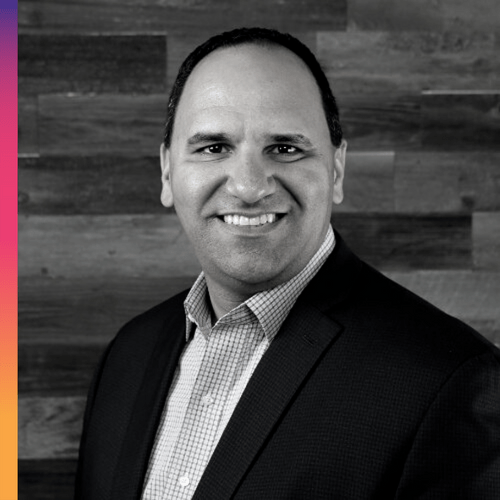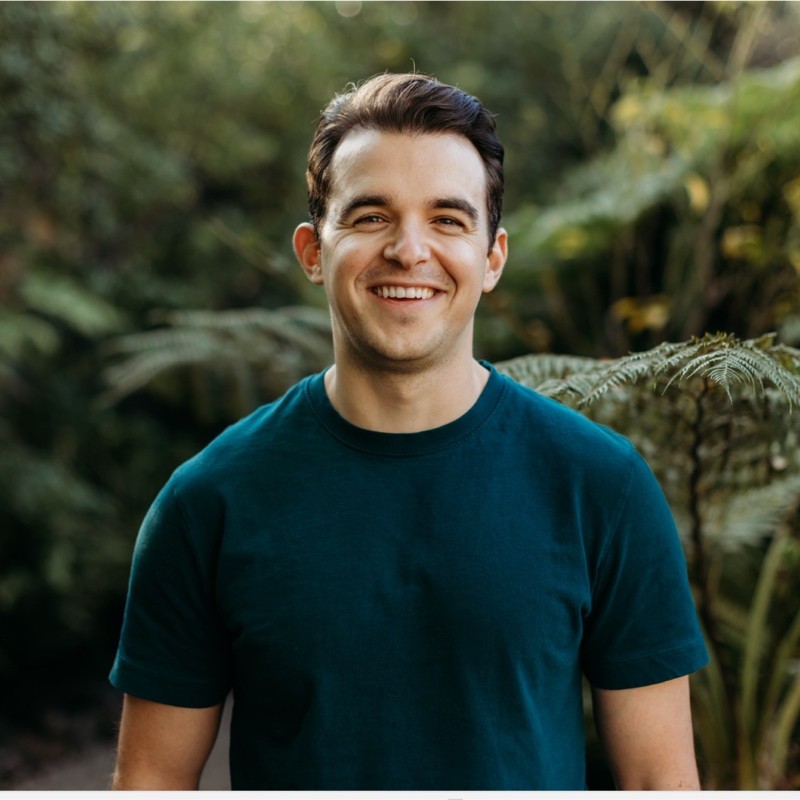B2B organizations frequently use Salesforce or a similar CRM tool to track their sales efforts and communication with prospects. As partnerships have become another arm of the sales department, it’s essential to track partner-sourced and partner-influenced deals as well as monitor relationships with existing partners.
Best practices for tracking partner referrals is a hot topic many of our members have asked about. After a surplus of requests to cover this topic, we spoke with partner professionals at organizations of varying sizes and industries, including:
- Dylan Rodgers, Head of US Operations at Candybox CRM
- Robert Harris, CEO at Torchlite
- Chris Formosa, Head of Global Technology Partnerships at Contentsquare
- Adam Michalski, CEO at Partnered
- Travis Bradley, Manager of Alliances — Financial Services at Tipalti
- Mike Vaccaro, VP, Global Partnerships and Alliances at tray.io
- Jared Fuller, Founder at PartnerHacker
Here’s how the experts have their Salesforce instances set up.
Dylan Rodgers: Account & Record Types

Throughout his entire career, Dylan Rodgers has been involved with Salesforce in some capacity. He started at Optimizely on the Sales Operations team and has spent the years since in Sales Operations and Revenue Operations, learning Salesforce on the job. Today, Dylan is the Head of US Operations at Candybox CRM.
Dylan divulged that he hasn’t yet seen an organization using Salesforce with an impressive partner attribution strategy, with most companies relying on third-party tools. However, he highlighted his process for partner attribution at Candybox, “Internally, we use record type and account type. We have account type as a subtype of record type where the record can be Customer or Partner. Underneath that, Customer records can hold an account type of Customer or Prospect.”
One of the things record types are used for is adjusting the page layouts. However, Dylan shared that Salesforce may be close to releasing functionality that would adjust the page layout based on different fields on the page. He explained, “For example, you could show different fields for retail vs. tech. Unfortunately, you can’t do that today. If you want fields to show up on one page, they also have to be visible on every other page — it’s overwhelming.”
This creates a small challenge when the partners Dylan works with are also Candybox customers. He explained, “For partners and customers, we duplicate records. We use different pages and different validations, so partners can even say they brought themselves in as a customer.”
Past that, Dylan highlighted that it gets complex when multiple partners are involved. “In an ideal situation, we can have one opportunity associated with many partners. Many partners can be involved in different opportunities. We’re still trying to figure out what are the phases for an early-stage company — what can they put in place that won’t take them a lot of time to build?”
Robert Harris: Custom Object

Robert Harris’s company, Torchlite, provides technology and services for partner teams, including PRM, Partner Directory, and PartnerOps as a Service. As he stands up the Torchlite partner portal for customers, he has visibility into the variety of starting points for partner attribution.
During his time, Robert has seen many different strategies. He shared, “There are many pieces that will depend on what type of partner program you have. Lots of companies start with a checkbox for partner-sourced. That breaks down when you have multiple partners involved. The way we have it set up and advise companies to set up is based on growing into a comprehensive partnering strategy by using a custom object to model partnerships.”
Using Torchlite, Robert’s team can pull in Crossbeam data to show reports that include the full scope of how partners are involved with a specific deal. Robert explained, “If partnerships are set up as a custom object for being able to model a one-many relationship for a deal, then that frees you up to use your existing sales workflow and gives you the power to tie any actions you want to the custom object.”
Unfortunately, the built-in SFDC, the out-of-the-box partner object is pretty limited and Robert cautions companies against a one-to-one relationship between a customer and partner. He highlighted, “For each deal, you shouldn’t just consider if it’s partner-sourced or not. You also must consider what type of relationship it is as well as what types of support and sales follow-up will be required. For each deal, you’ll want to consider whether the partner sourced or influenced it and differentiate where the deal came from. It can help to have different fields for listing the tech partner involved in the deal, channel partner, and more”
In Robert’s experience, account types can work well when there’s more than one record for that business. He explained, “When you have an account for the client and one for the partner, that can work well. However, if you take a given business and only have one account type, you’ll run into problems. There, typically Sales wins, and Partner becomes a second-class reporting structure.”
Robert has found custom objects to work best for his partner referral attribution and shared a few pieces of advice for using custom objects. “Be sure to test in a sandbox type of environment. It’s easy to get stuck in analysis paralysis when trying to build out requirements and think about all of them. My experience is most people feel their way through it — if they can see how it’s working and massage from a reporting standpoint, that’s most effective. Don’t just think about it and convey requirements to an SI and expect great results from it. Actually do testing in a sandbox, then you’ll know for sure.”
Chris Formosa: Custom Fields

Chris Formosa is the Head of Global Technology Partnerships at Contentsquare where he oversees strategy and the tech partners team, including ISVs and cloud alliance partners. In his role, he works with partners to develop valuable integrations, solid joint value props, and ensure they’re co-selling and co-marketing. He is also responsible for tracking pipeline and closed-won business.
On his Salesforce setup, Chris shared, “Every single opportunity that you open in our Salesforce instance has the ability to tag partners to them. We can tag whether they sourced, referred, or influenced the deal and whether it came from a marketing campaign via a partner object.”
Chris and his team use custom fields to identify referring and influencing partners. He explained, “We have a partner object that we can use to tag involved partners in two places — referrals in one section so we can track and report on any referral fees and commissions owed and influenced where we can tag as many partners to an opportunity as needed—along with details about how the partner influenced the deal. All of our reporting comes out of these custom fields.”
Chris’s strategy works well for his team and ties in well with his co-marketing efforts. For every campaign Contentsquare runs with partners, they build an associated campaign within Salesforce. From there, any opportunities that come in through campaign-related efforts are associated with the partner. If an opportunity arises from that, it’s noted as partner-sourced.
Adam Michalski: Custom Fields

Adam Michalski is the CEO of Partnered and host of The Partnered Podcast. In addition to supporting partnership professionals with Partnered, Adam regularly interviews industry leaders on their experiences, strategies, and insights.
Adam also recommends using custom fields to associate partners with deals. He shared, “The way I recommend and have seen to be most effective is using a sourced and an influenced field in the opportunity object. Typically, we’ll use one sourced field and two or three influenced fields. There’s only one person who can source a deal, but multiple who can influence a deal.”
Adam highlighted how he determines which partner gets credit, “Sourced is the most straightforward. The test on sourced is would you have gotten that deal without that partner? If yes, then it’s probably not sourced. If the answer is no, then it’s 100% sourced.”
On the other side of things, influence is more difficult to measure. He explained, “For us, everything gets bucketed into one influence, but you could dig deeper if you’re more sophisticated about your attribution. Partner influence is defined as anybody who assisted in getting the deal done, whether it be providing a recommendation or information, such as who to speak with, or how to navigate the deal. Influencing can sometimes be as impactful as an introduction.”
Back to Salesforce, Adam reiterated that you want partner referrals documented on the opportunity object. He shared, “Some people have logic to pull the opportunity object back to the account object. The way most organizations do this today is they have that field manually filled out. There are some best practices. Organizations that try to tell the salesperson to fill that out end up missing a lot of that attribution. The salesperson isn’t compensated for that, so it’s the last thing they’re thinking about. Make it so the partner manager is ultimately responsible for filling those fields out. The savviest organizations will build logic to automate that process. (And Partnered can help automate this!)”
Travis Bradley: Custom Objects & Fields

Travis Bradley is approaching a decade spent in partnerships, having worked as a Senior Solutions Partner Manager at Amplitude Analytics before moving to Tipalti. In his role, Travis has spent significant time researching and experimenting with Salesforce best practices, recently interviewing over a dozen professionals on what their pains are, their relationship with the operations team, and any gaps they’re seeing.
Throughout his time spent in partnerships, Travis discovered effectively implementing Salesforce to track referrals is an iterative process. He explained, “You have to first consider the relationship with your operations team and how to get your operations team to help you do the work. You want to ensure your strategy doesn’t lead to data silos within Salesforce.”
The big decision is whether you want to manage different account types. Travis shared, “We use the same account type, but we have different account record types. You open the account the same way, and you can choose a partner, client, or prospect. Within opportunities, we have two different types — partnership opportunity and client opportunity.”
Digging deeper, Travis highlighted, “Within the partner relationship object, we have several fields. We track if a partner has a positive, negative, or neutral influence and the likelihood of qualifying this quarter. Some people do that on the opportunity. We also track who the Partner Manager is.”
At Tipalti, there’s very little dispute over partner involvement. While Travis deals with aspects of multiple touchpoints, they’re pretty binary regarding attribution. When his team creates a prospect, it’s attributed to the first partner.
Mike Vaccaro: Custom Fields

Mike Vaccaro has been at tray.io for nearly a year, growing the partnerships department from a team of one to a team of seven. He previously held VP-level partnerships roles at Tealium and has served as a c-suite executive in the past.
In Mike’s role at tray.io, he and his team leverage Crossbeam for populating their Salesforce instance. “There are a couple of ways we track partner referral depending on the routing. We have a deal registration process or manually do it. When we have an opportunity based on a partner recommendation, I create a referral opportunity off the partner account. It automatically populates the partner and all their info. I put in the opportunity, and all the info, then hit submit. Then on the opportunity record, in lead sourced, it will say partner referral and the partner’s name.”
“Also, on the opportunity record, we have a co-sell option for partner influenced,” Mike continued. “If it’s a customer my sales team is going after and I know they’re a partner’s customer, I’ll hit up the partner and ask for some help. Let’s say it passes the criteria that they co-sold. I then follow the same type of process as lead sourced.”
Mike recommends surrounding the deal with as many sources of influence as possible. He shared, “I’ll reach out to all the partners I know when working with a prospect. There have been times when multiple partners are engaged — I want to make sure the system is flexible enough to document that and that the team is documenting that. I’ve seen where there’s a sourcing partner and two influenced partners.”
The best way Mike has been able to ensure partners get credit where due is through a process with regional sales leadership. He explained, “In the past, someone would always question if it’s sourced or influenced. We even got to the point where regional sales leadership would approve the partner on the deal so there are no questions. It was effective, and now we set Salesforce up so a sales rep couldn’t close a deal unless the box was checked.”
Jared Fuller: Account Types & Account-to-account Relationships

Jared Fuller has founded and brought partnerships to multiple companies. Notably, he helped scale PandaDoc and Drift. Today, Jared hosts the PartnerUp Podcast.
In Jared’s experience, using account types and account-to-account relationships for tracking partner referrals has been the most effective, even at scale. He explained, “Since you may have accounts that are prospects, customers, and partners, using account types makes it easy to stack those qualities. Salesforce has built-in partner-related lists enabling account-to-account relationships, which is how I associated partners with referred accounts at Drift with thousands of records.”
Jared shared that custom objects are another option that works, but isn’t necessary. He highlighted, “When you use account types and associations, it will be easier to integrate with your PRM. Using a custom object is another burden as your PRM won’t work with your custom object out of the box.”
In summary, set up a different account record type for partners so you can control the layout, then use related objects for partner attribution.
Track Your Partner Engagement
Unfortunately, there’s no one-size-fits-all solution for tracking partner referrals. Ultimately, the best strategy will depend on your operations team’s capabilities, your existing partner processes, and your team’s level of comfort within Salesforce. When exploring new strategies for referral tracking, take the time to set up a sandbox and experiment with different setups, form fields, and account types.
If you’re ready to invest further in your process, tools like Candybox CRM, Torchlite, and Crossbeam can help streamline partner referral tracking within Salesforce. Be sure to explore the Partnership Leaders Ecosystem Catalog for more solutions to your partner program challenges.
Thanks to the Partnership Leaders members who requested we cover this topic and to the experts who shared their thoughts with us. If you have more insights to add, be sure to join the conversation on Slack!
Join The 1850+ Leaders Transforming Partnerships
As a member of Partnership Leaders you will:
- Build and learn with the top partner people at the best companies around the world.
- Increase your impact and accelerate your career with proven resources, tools, and best practices.
- Grow a network of peers, partners, and advisors with common objectives.

